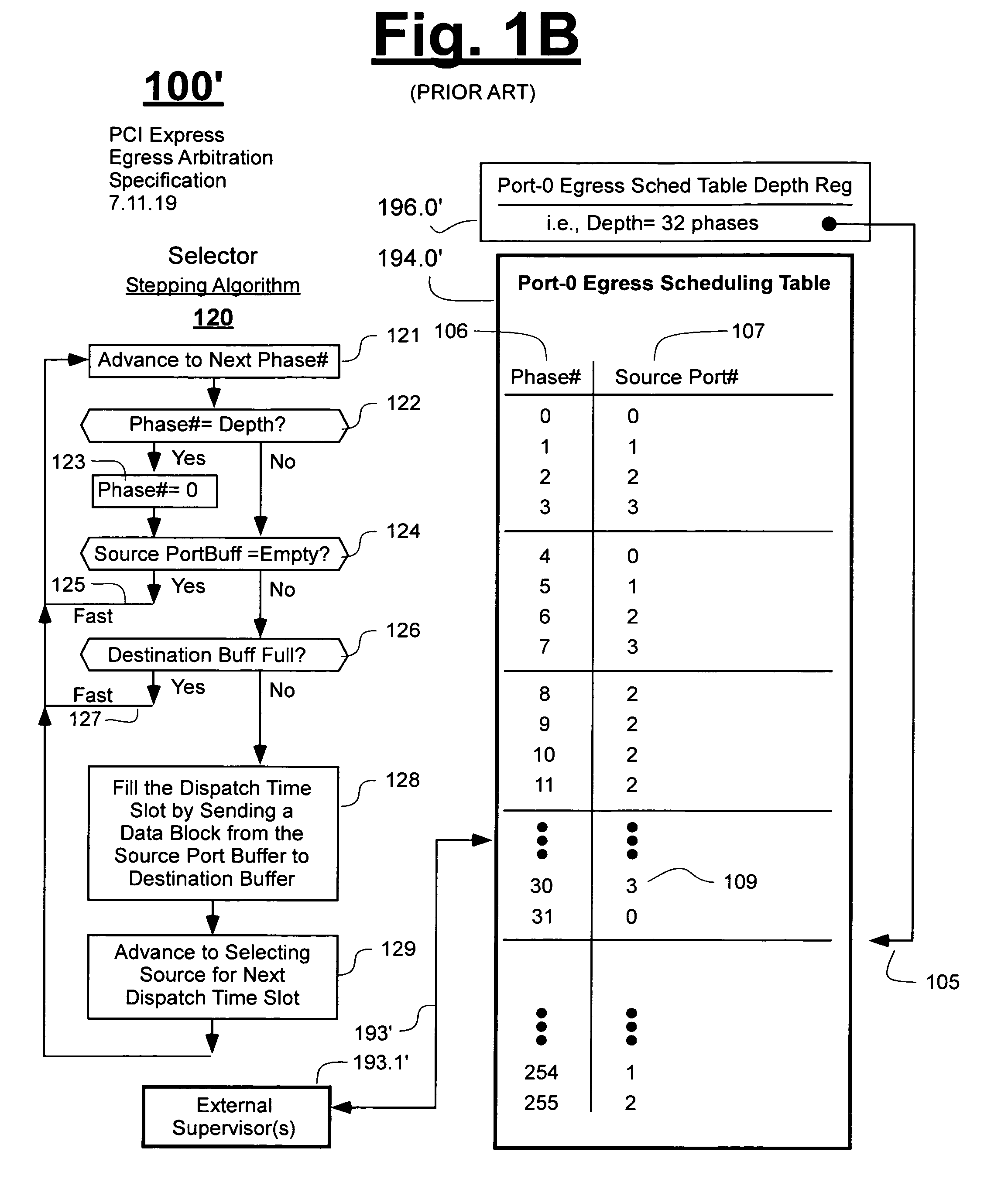Method of improving over protocol-required scheduling tables while maintaining same
a scheduling table and protocol technology, applied in the field of data processing systems, can solve the problems of general limited availability of ports and/or their bandwidth, congestion underutilization of resources can be a problem, so as to achieve less memory space, improve efficiency, and reduce the effect of consuming resources
- Summary
- Abstract
- Description
- Claims
- Application Information
AI Technical Summary
Benefits of technology
Problems solved by technology
Method used
Image
Examples
Embodiment Construction
[0024]Referring to FIG. 1A, shown is a system 100 that uses a PCI-express™ serial interconnect network to interconnect a data originating, first device 101 (Originator) to a data receiving, third device 103 (Receiver, Destination) by way of a data routing and / or processing second and intermediate device 102.
[0025]Each of devices 101, 102 and 103 may be implemented as a monolithic integrated circuit (IC). The second device 102 is illustrated in greater detail than are the originator device 101 and the destination device 103. However, it is to be noted that devices 101 and 103 may be as complex of even more complex than the intermediate device 102.
[0026]It is also to be noted that the first device 101 need not be a single-ported packet sourcing device although it is shown as such in FIG. 1A. The first device 101 may alternatively have been shown as a multi-ported routing one that sends and receives data over a plurality of bidirectional ports in much the same way as does the more deta...
PUM
 Login to View More
Login to View More Abstract
Description
Claims
Application Information
 Login to View More
Login to View More - R&D
- Intellectual Property
- Life Sciences
- Materials
- Tech Scout
- Unparalleled Data Quality
- Higher Quality Content
- 60% Fewer Hallucinations
Browse by: Latest US Patents, China's latest patents, Technical Efficacy Thesaurus, Application Domain, Technology Topic, Popular Technical Reports.
© 2025 PatSnap. All rights reserved.Legal|Privacy policy|Modern Slavery Act Transparency Statement|Sitemap|About US| Contact US: help@patsnap.com



